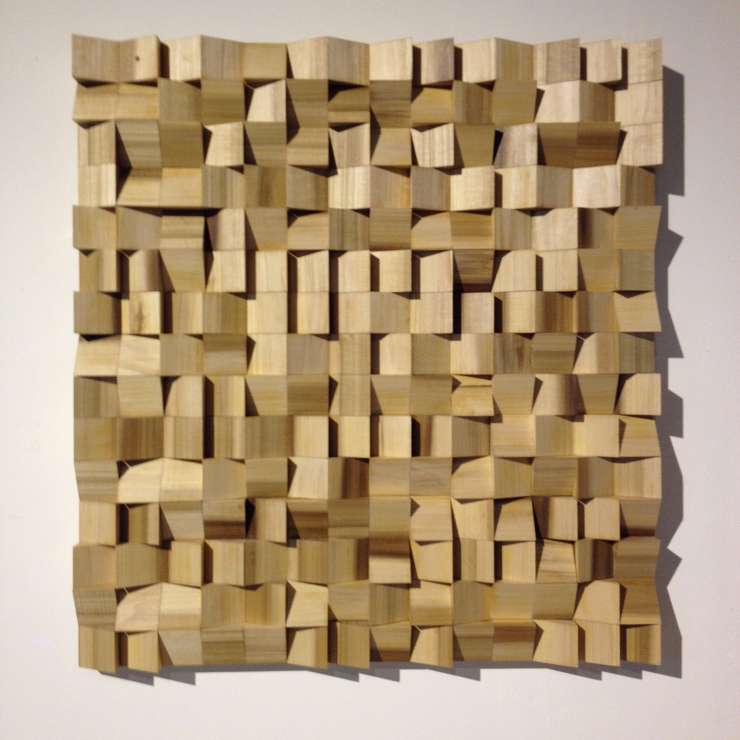Don Satijn
kunstinzicht.nlRubrieken
Introduction to the work of Don Satijn by Inge OrlowskiBasic concepts of the work of Don SatijnLabour, harmony and meaning in the works of Don Satijn By Rutger van HoutenA concise survey of the works of
Don Satijn
By Marcel Teunissen, art historianReflections On work by Don Satijn from the series “Encryptions-Perforations”,2014-2018 By Marijke ten CaatENCRYPTIONS, by Alex HegieBarcodes by Don Satijn
By Rutger van Houten
The process that takes place between idea and object may be described as an intuitive system, guided by a love and fascination for variation options and harmony.
Labour
The first thing that strikes one about Don Satijn’s works are their stark austerity and apparent simplicity. All his creations, however, are the result of a labour-intensive process. A process in which rules apply that the artist has set himself, conditions the works must eventually meet. He follows a binary system, by which a space is there or it isn’t, it is filled in, or it is open. Within the limits of his own rules he explores possible variations by means of this system. Thus he undertakes a quest for variation options from one single starting point. He is especially fascinated by the scale the number of options takes on, sometimes bordering upon the infinite. By losing himself in his explorations Satijn tries to point us to the infinity and elusiveness of the surrounding cosmos. For him the process of construction is at least as important as the final work of art.
Many of his visual works take the square or the cube as their starting point. These measurable forms allow him to draw up a calculable and exhaustive numerical list of possible variations within the restrictions he has set himself. By converting all these options into graphics, making the numerical list visual, the artist achieves a consciousness of form. Thus he sees each new form take shape.
Although these graphic conversions are all contained within the restrictions of his preconceived rules it is not always possible to execute them all. Moreover, not every single form is visually interesting. Satijn consequently drops the systematic and mathematic considerations and makes his choice from the options that have arisen. He sometimes opts for limiting the number of variations by tightening the rules, and thus the exploration recommences. The variations that eventually remain after this process constitute what he calls ‘basic forms’. These basic forms, or combinations thereof, are converted into two-dimensional or three-dimensional works.
Harmony
To Satijn an image is visually interesting only when it looks harmonious. The rules and restrictions the artist sets himself are based on the relations between measurements, i.e. on their proportions. His mathematical method of operation is not solely intended to enable him to operate within a sharply defined framework. The measurability of the forms he works with, and their proportions, determine the harmony within the final results. This harmony is contained within the basic forms, but also within the works for which they serve as building blocks.
Meaning
It is not Satijn’s intention to transmit anything in particular by individual works. He refrains from fixing meaning. Through their abstraction the square and the cube do not carry meaning per se. In addition to their measurability it makes these forms eminently suitable to work with. The public may inevitably derive meaning and associations from the objects. But for the artist the variety in meaning assigned by the viewer is the most interesting aspect. Just like his exploration of variation options this offers him a glimpse of infinity that fascinates him. Thus each of Satijn’s works offers a meta-meaning which is the motive for his labour-intensive method: showing the infinity of the cosmos and the concomitant insignificance of our earthly existence within it.
